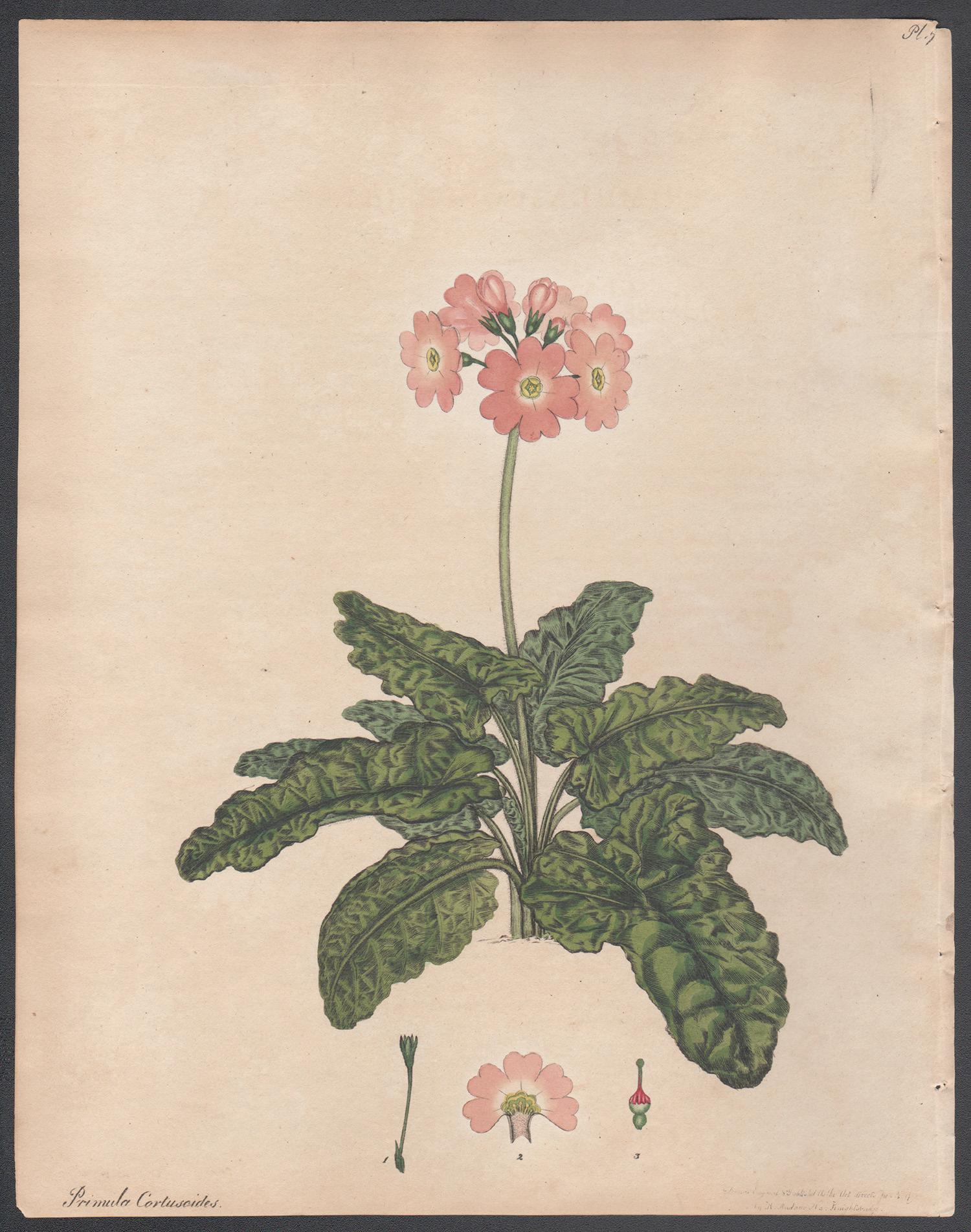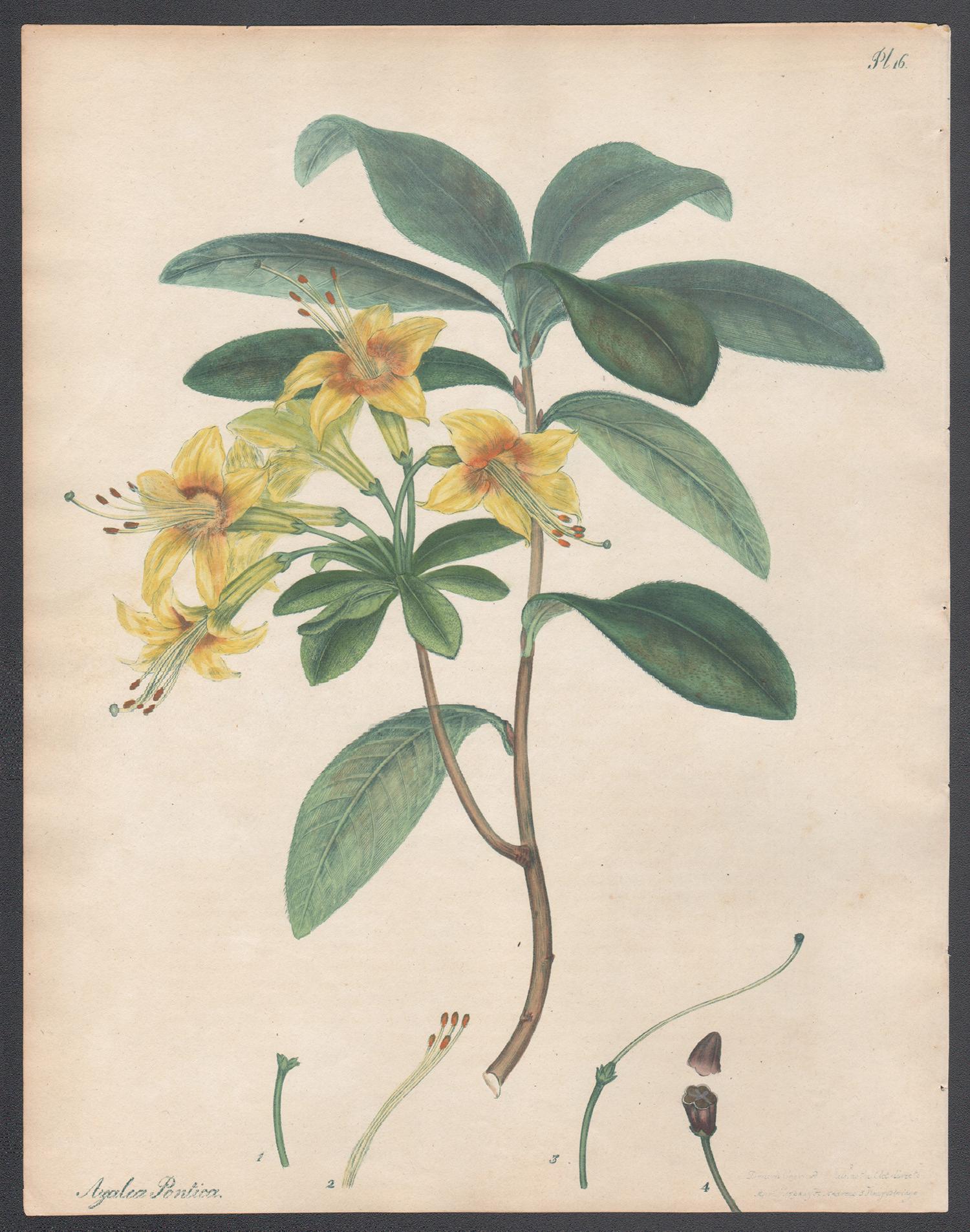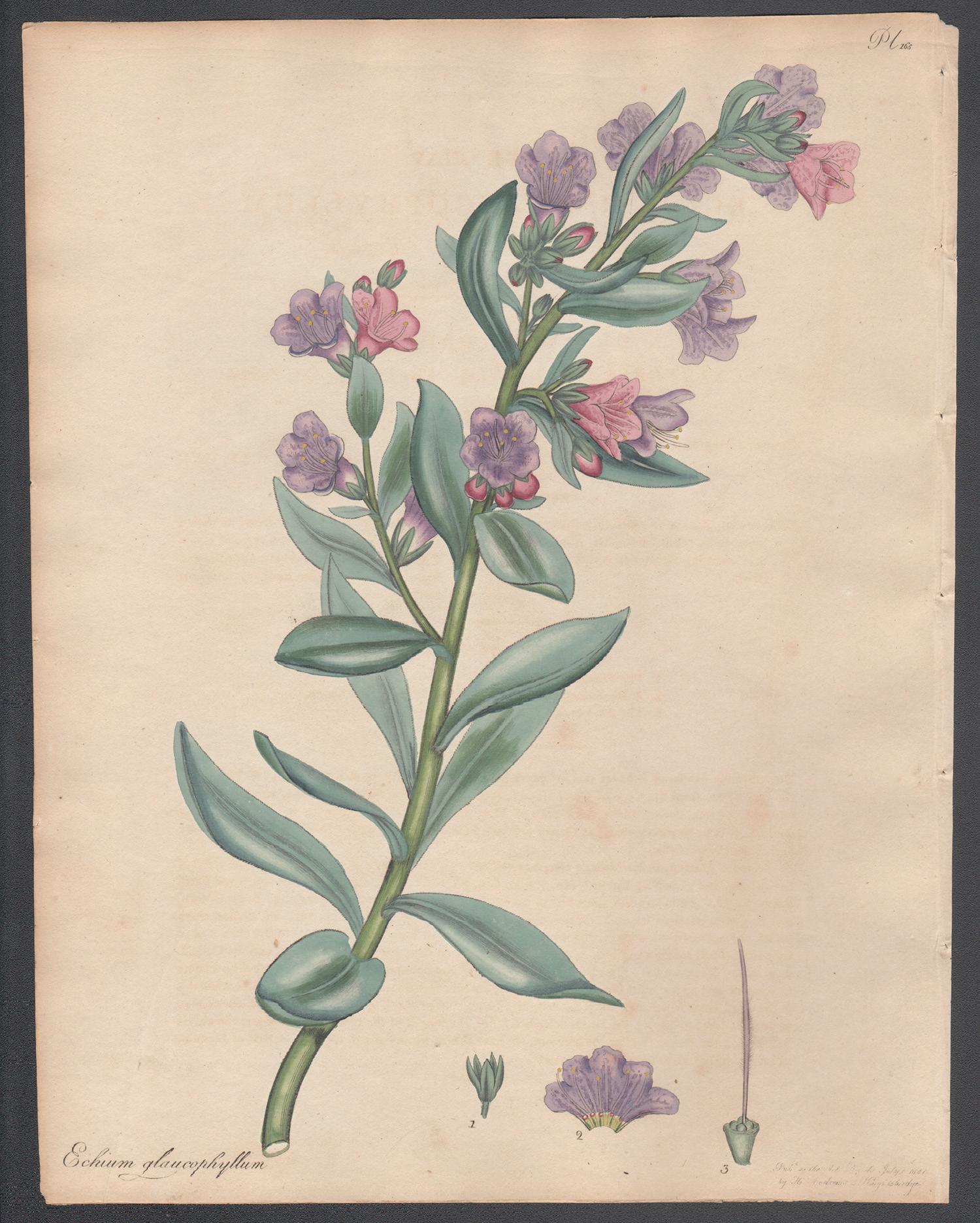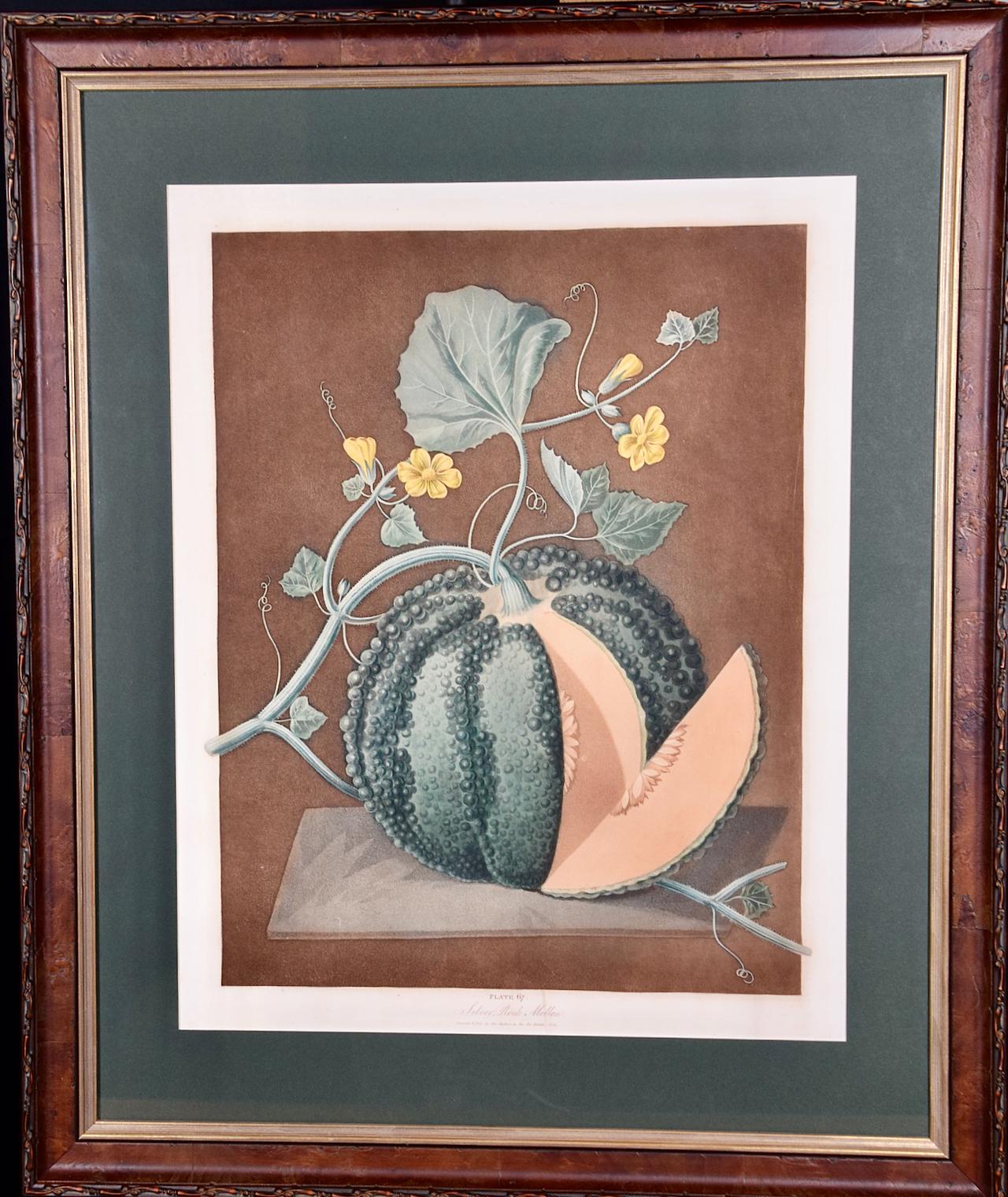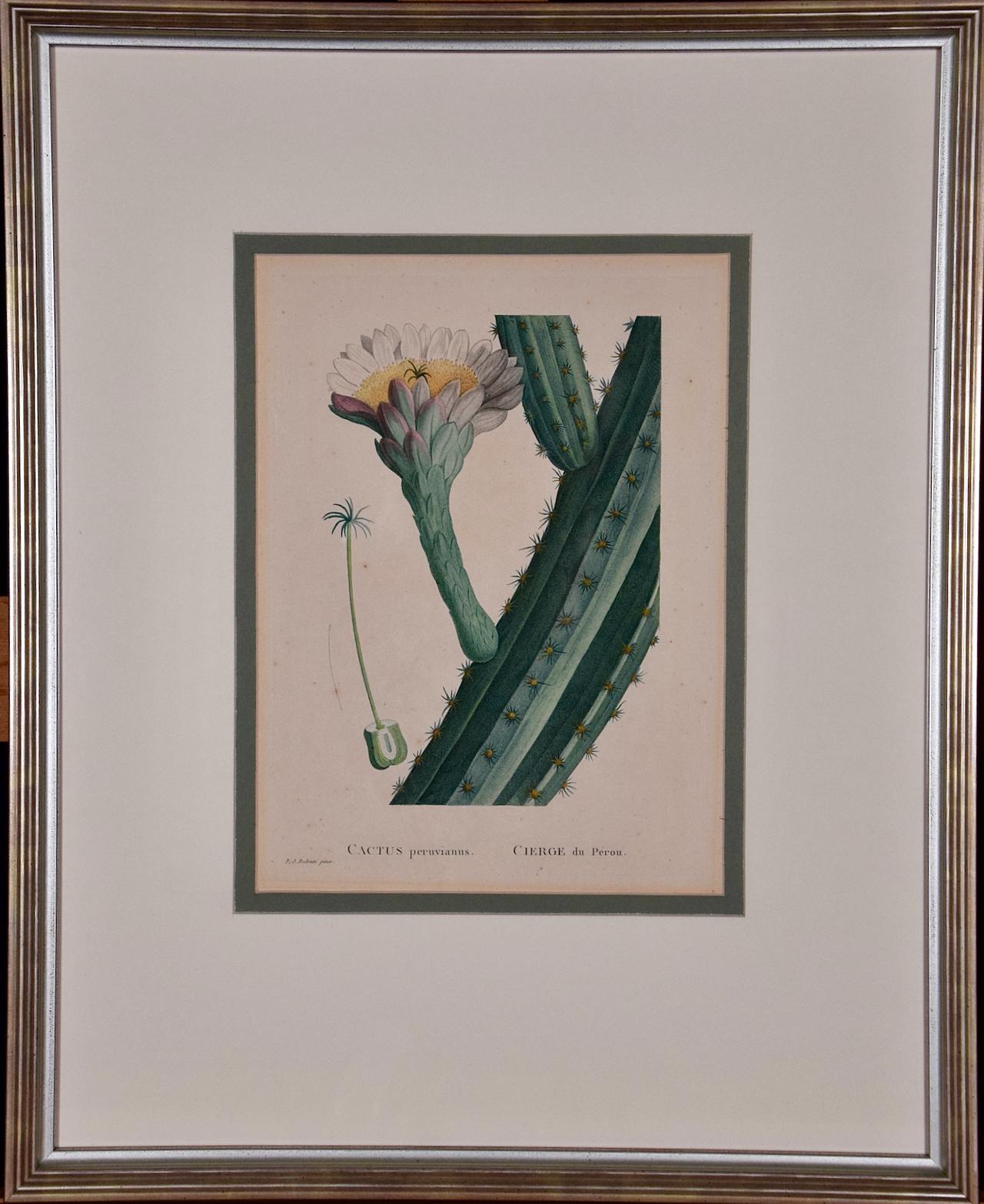Items Similar to Yucca filamentosa - French botanical flower engraving by Bessa, c1830
Want more images or videos?
Request additional images or videos from the seller
1 of 3
After Pancrace BessaYucca filamentosa - French botanical flower engraving by Bessa, c18301830
1830
About the Item
'Yucca filamentosa' (Adam's Needle)
Original copper-line engraving with original hand-colouring.
From 'Herbier general de l'amateur' by Jean Louis Auguste Loiseleur-Deslongchamps & Jean Claude Michel Mordant de Launay. Published in Paris, circa 1830.
Pancrace Bessa was a talented pupil of Redoute & Van Spaendonck and is considered one of the greatest 19th century flower artists.
290mm by 215mm (sheet)
205mm by 130mm (platemark)
- Creator:After Pancrace Bessa (1772 - 1835)
- Creation Year:1830
- Dimensions:Height: 11.42 in (29 cm)Width: 8.47 in (21.5 cm)
- Medium:
- Movement & Style:
- Period:
- Condition:
- Gallery Location:Melbourne, AU
- Reference Number:1stDibs: LU124426517762
About the Seller
5.0
Platinum Seller
These expertly vetted sellers are 1stDibs' most experienced sellers and are rated highest by our customers.
Established in 2005
1stDibs seller since 2019
445 sales on 1stDibs
Typical response time: 1 hour
- ShippingRetrieving quote...Ships From: Melbourne, Australia
- Return PolicyA return for this item may be initiated within 14 days of delivery.
More From This SellerView All
- Primula Cortusoides - Siberian Primrose. Henry Andrews botanical engraving printBy Henry C AndrewsLocated in Melbourne, Victoria'Primula Cortusoides - Siberian Primrose' Native of Siberia. Original copper-line engraving with original hand-colouring from Henry Andrews' 'The Botanist's Repository', 1797-1812...Category
Early 19th Century Naturalistic Still-life Prints
MaterialsEngraving
- Yellow Pontic Azalea. Henry Andrews antique botanical flower engraving printBy Henry C AndrewsLocated in Melbourne, Victoria'Azalea Pontica - Yellow Pontic Azalea' Native of the coat of the Black Sea. Original copper-line engraving with original hand-colouring from Henry Andrews' 'The Botanist's Reposi...Category
Early 19th Century Naturalistic Still-life Prints
MaterialsEngraving
- Echium Glaucophyllum, Henry Andrews antique botanical flower engraving printBy Henry C AndrewsLocated in Melbourne, Victoria'Echium Glaucophyllum - Sea-green-leaved Viper's Bugloss' Native of Cape of Good Hope, South Africa. Original copper-line engraving with original hand-colouring from Henry Andrews...Category
Early 19th Century Naturalistic Still-life Prints
MaterialsEngraving
- Azalea Pulchra, antique botanical flower engravingLocated in Melbourne, VictoriaEngraving with original hand-colouring. 1834. 230mm by 155mm. From Paxton's 'Magazine of botany and register of flowering plants' by Sir Joseph Paxton.Category
Mid-19th Century Naturalistic More Prints
MaterialsEngraving
- Azalea indica danielsiana, antique botanical pink flower engravingLocated in Melbourne, VictoriaEngraving with original hand-colouring. 1834. 230mm by 155mm. From Paxton's 'Magazine of botany and register of flowering plants' by Sir Joseph Paxton.Category
Mid-19th Century Naturalistic More Prints
MaterialsEngraving
- Petunia violacea, antique botanical purple flower engravingLocated in Melbourne, VictoriaEngraving with original hand-colouring. 1834. 230mm by 155mm. From Paxton's 'Magazine of botany and register of flowering plants' by Sir Joseph Paxton.Category
Mid-19th Century Naturalistic More Prints
MaterialsEngraving
You May Also Like
- Silver Rock Melon: A Framed 19th C. Color Engraving by George BrookshawBy George BrookshawLocated in Alamo, CAThis is a 19th century colored aquatint and stipple engraving finished by hand entitled "Silver Rock Melon", drawn and engraved by George Brookshaw and published in London in 1812 as plate 67 in his 'Pomona Britannica; or, A Collection of the Most Esteemed Fruits'. It depicts a Silver Rock Melon still on the vine, but the melon lies on a heater green mat. A wedge of the melon has been dissected to reveal its inner anatomy, including the seeds. The melon skin is a heather and light green color, while the inner portions are a light peach color. The vine and leaves are shown attractive shades of light green and there are soft yellow flowers. The plant is displayed on a light brown textured background with shadows to impart 3-dimensionality. The scene is reminiscent of an engraving in an 18th century artistically stylized human anatomy atlas. There are wide white margins. The title and inscription lies within the lower border. This striking engraving is presented in a reddish brown decorative wood frame with a darker brown scroll-work outer trim and a gold-colored inner fillet and a thick heather green mat. The frame measures 25.75" high, 21.5" wide and 1.13" deep. It is glazed with UV conservation glass. There is a short thin vertical line of discoloration in the lower margin through the word "melon" and a tiny spot in the upper margin on the left. The print and frame are otherwise in excellent condition. There is a second Brookshaw engraving that is framed in identical moulding, although a slightly different size and a different color mat. t depicts a cluster of grapes. The two prints would make a striking display pairing...Category
Early 19th Century Naturalistic Still-life Prints
MaterialsEngraving, Aquatint
- White Hamburgh Grape: A Framed 19th C. Color Engraving by George BrookshawBy George BrookshawLocated in Alamo, CAThis is a 19th century colored aquatint and stipple engraving finished by hand entitled "White Hamburgh Grape", drawn and engraved by George Brookshaw and published in London in 1812 as plate 60 in his 'Pomona Britannica; or, A Collection of the Most Esteemed Fruits'. It depicts a cluster of pale green grapes still on the vine. The vine and leaves are shown in attractive shades of green and brown. The plant lays on a brown textured background with shadows to impart 3-dimensionality. The scene is reminiscent of an engraving in an 18th century artistically stylized human anatomy atlas. There is a light brown title rectangle in the lower center which is blank, suggesting this may be a more rare preproduction proof. There are wide white margins. This striking engraving is presented in a reddish brown decorative wood frame with a darker brown scroll-work outer trim and a gold-colored inner fillet and a thick light beige mat. The frame measures 26" high, 22" wide and 1.13" deep. It is glazed with UV conservation glass. There is a tiny spot in the lower margin on the left and another in the left margin. The print and frame are otherwise in excellent condition. There is a second Brookshaw engraving that is framed in identical moulding, although a slightly different size and a different color mat. It depicts a Silver Rock Melon. The two prints would make a striking display pairing...Category
Early 19th Century Naturalistic Still-life Prints
MaterialsEngraving, Aquatint
- Redoute Hand-colored Engraving of Cactus Flowers "Cactus Peruvianus Cierge"By Pierre-Joseph RedoutéLocated in Alamo, CAThis framed hand-colored stipple engraving entitled "Cactus Peruvianus Cierge du Pérou" by Pierre-Joseph Redouté, Plate 58 from his illustrated publication 'Plantarum Historia Succulentarum ou Histoire des Plantes Grasses', published in Paris in 1799. It depicts a branching limb of a cactus with a beautiful flower. There is a separate detail of the anatomy of a seed with early growth. Redoute was a pioneer of the stipple engraving technique, which he used to create this image. It involves utilizing a series of small dots worked into a copper plate rather than the more common lines. These dots can be made smaller or thicker depending on the degree of opacity the artist intends for various areas of the print. When inked and applied to paper, this allows for a greater portion of the paper to be seen, which accentuates the appearance of luminosity of the subject the artist is creating. Different color inks are used in the printing process, a time consuming technique known as "a la poupee". The engraving is then finished with watercolor to further enhance the beauty and realism of the print subject. This engraving of a flowering cactus is presented in silver-colored ribbed wood frame and a double mat; cream-colored outer mat and heather green inner mat. The frame measures 21.25" high by 17.25" wide by 1.13" deep. The sheet measures 19.88" high by 14" wide. There are wide margins with a few short tears and chips along the the left, right and upper edges, which are all covered by the mat. There are small spots predominantly in the margins, with a few present in the image area. The print is otherwise in very good condition. There is another Redoute flowering cactus listed on 1stdibs, LU117326853392, which is framed and matted identically to this one. The pair would make an attractive display grouping. Pierre-Joseph Redouté (1759-1840), was a painter and botanist originally from Belgium, who pursued his extremely successful artistic career in France. He is well known for his watercolor paintings of roses, lilies and other flowers and their subsequent folio-sized, color stipple engravings. Some believe him to be the greatest botanical illustrator of all time. Redouté was a favorite of the French royal court at the time and of the post French...Category
Late 18th Century Naturalistic Still-life Prints
MaterialsEngraving
- A Group of Six Pears.By Pierre Jean François TurpinLocated in London, GBPOITEAU, A. and P. TURPIN. Traité des arbres fruitiers: A Group of six Pears. H. Perronneau for T. Delachausée, Paris, 1807-1835. A group of six stipple-engraved plates printed in c...Category
Early 1800s Naturalistic Still-life Prints
MaterialsEngraving
- BUCHOZ. A Group of Four TulipsLocated in London, GBA Group of 4 hand-coloured engraved plates of tulips, in matching silver leaf frames. Dimensions: 34.6cm by 48.5cm. A fine group of these rare flower plates, the complete volume of 40 being part of Le Jardin d'Eden, which was intended as the supplement to the Collection des Fleurs de la Chine & de l'Europe, first published in 1776. [Paris 1781] The second half of the eighteenth century saw a boom in natural history publications in France fuelled by such works as Buffon’s Histoire Naturelle. The accession of Louis XVI in 1774 was followed by a relaxation in the regulation of the book trade making it easier for authors to publish their own works. No other writer was to take such copious advantage of these two developments as Pierre-Joseph Buchoz (1731-1807), a French physician, lawyer and naturalist. His works are characterised by the beauty of the illustrations, and their rarity owing to the small size of the print runs. The final tulip plate...Category
1780s Naturalistic Still-life Prints
MaterialsPaper, Engraving
- GALLESIO. A Group of Six Grapes.Located in London, GBSix hand-coloured plates of Grapes, printed in colour and finished by hand. Framed and glazed, overall size: 42.5 by 57.5cm. Pomona Italiana Ossia Trattato Degli Alberi Fruttiferi...Category
1810s Naturalistic Still-life Prints
MaterialsEngraving, Handmade Paper
Recently Viewed
View AllMore Ways To Browse
19th Century Flowers
French Botanicals
French Botanical
Flower Engravings
Engravings Of Flowers
Engravings 19th Century French
Engravings With Flowers
Antique Copper Still
Antique Copper Stills
Copper Still Antique
French Needles
Adam Flowers
Antique French Botanical Prints
Louis Claude Artist
French Herbiers
Social Objects
Love Watch
Box Nature
